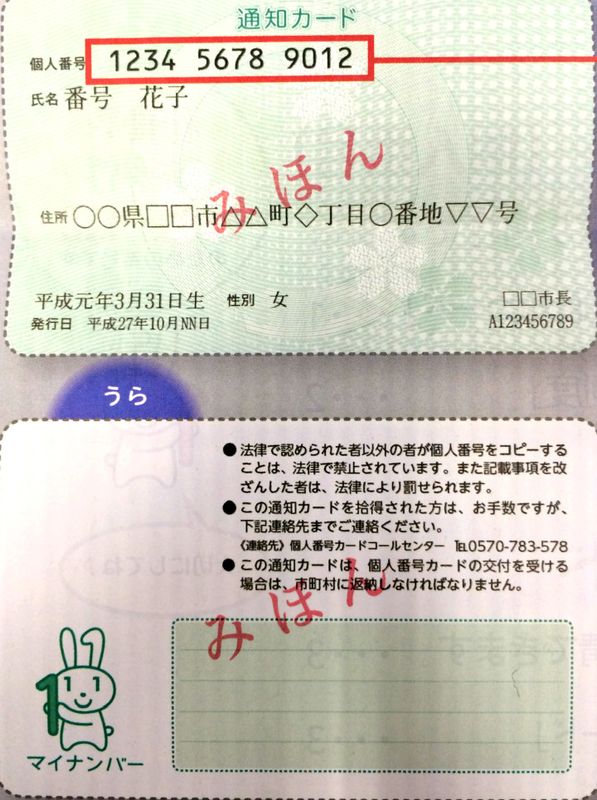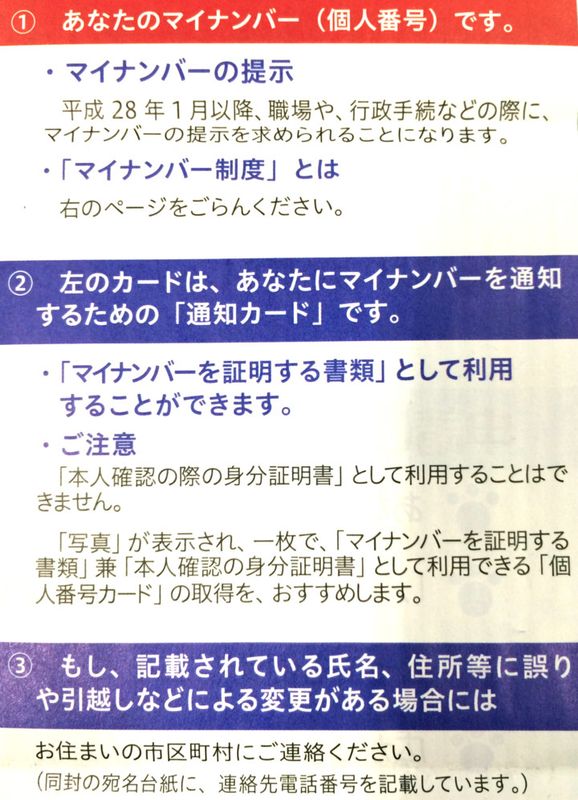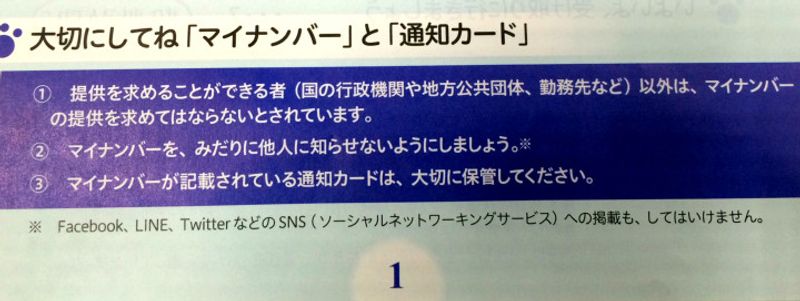Nov 24, 2015
Understanding My Number in Japan. Sorry, Your Number. No, Your ‘My Number’!

So it’s official, I’ve been reduced to naught but a number - my number. Next step; shaved head, ill-fitting white pajamas and some kind of dystopian world where it turns out I spend all my time playing a virtual reality video game. Still, one step at a time eh? At least it’s my number. Nobody can take it away from me. It even says so on the card - (マイナンバー / my number)!
Just to refresh ourselves briefly, My Number in Japan is a 12 digit number (all numerals) identifying individuals in the social security and tax number system. The My Number bit is just a nickname to distract from the potential dystopian feel of the situation.
Anyway, according to the people upstairs in Japan, My Number it’s going to streamline matters relating to social security, administration, tax, and disaster response. And on the plus side, it might reduce the amount of eye-watering bureaucracy for which this country is infamous.
Anyway, My Number is here and if it hasn’t come to you yet, it will do soon.
Let’s have a go at understanding My Number in Japan ...
What is it physically?
A rather uninspiring bit of card, with a cute bunny rabbit on it (or is it a dog with long ears?)!
What do I have to do to get a My Number?
Nothing, it just gets delivered in the mail.
What do I do with My Number?
Well, it comes with an extensive set of instructions.
True to form however, they’re all written in Japanese. Actually though, there’s very little that you HAVE to do with your My Number.
The key bit at this stage is that you’ve been given a number, and it comes on a 通知カード / tsuuchi card / notice card. At this stage, all you have to do is cut the card out (along the dotted line) and not lose it! You don’t have to carry it around with you, and nor is there any pressing need to commit your My Number to memory.
Let’s look at the first set of instructions to put your mind at ease. (See image above; your 通知カード / tsuuchi card / notice card ...)
Your number is highlighted by the red box (個人番号 / kojin bangou / personal number).
Also listed on the card are your name, address, D.O.B, gender, date of issue, and local authority.
The warning at the bottom (not pictured), (注意!) is simply requesting that you cut the card out nicely, along the dotted lines.
There are some things you need to check, and be aware of. See next image …

1) This text explains that from January next year, you’ll need to show your number when carrying out procedures at your place of work / city hall.
2) This section explains that the card you’ve received is simply notice of your My Number. It can be used as proof of such. However, it CANNOT be used as a personal ID for you, nor can anyone else use their card likewise. If you wish to use it as such, you can apply for a 個人番号カード / kojin bangou card / personal number card. More on that later.
3) The card you’ve received was likely made some time ago, so be sure to check for mistakes/changes of personal details. If there are any, you need to get in touch with your local city office.
At the bottom of page 1 of your instructions, there is a request to treat your number/card with care …

1) Currently there are three types (?) of people in Japan who can request to know your My Number; HR at work, civil servants, and public / government offices / authorities. You’ve no need to reveal it to anyone else, even if they ask. Be warned though, this whole system is still a work in progress, so all this is subject to changes in the future.
2) Don’t show your number to anyone without good reason.
3) Look after your card carefully.
There’s also a footnote warning not to reveal your number on social media.
We mentioned above about the 個人番号カード/ personal card. The bottom part of your My Number notice card (the bit left over after you’ve done cutting) is the relevant application form. It seems like this is what the authorities want to push us towards. At this stage (and for the foreseeable future), you don’t have to do this. The card you’ve just received is sufficient.
There are benefits (for who?) with the personal My Number ID card. These include being able to use it as a form of ID, and streamlining things like your health insurance, and other such card-requiring services into one bit of plastic.
[CC YouTube channel: MY NUMBER CARD Japan: What's the point beyond the mynapoints?]
You can apply for it now, but it won’t be issued until next year. We’ll look at the application procedure and benefits of this card in more detail another time.
For now, as we’ve said, the whole My Number system seems to be subject to changes in the future, so keep an eye on City-Cost for further updates (in English)! In the meantime, sit tight until you get your number in the post, and be sure not to lose it!
Click here for a Q&A about My Number and the system as a whole, conducted by the Cabinet Secretariat. For definitive information, best to get down to your city office. Also, please be aware that none of the above is an official/direct translation of the documents received.
Got any concerns about all this? Trouble understanding My Number? Share your questions/concerns by leaving a comment below.



1 Comment
KevinC
on Nov 25
The HNK guy visited my home this Monday, keep telling them I don't have a TV then he ask for Ketai (Japanese phone with TV function). I flash my iPhone then after a few seconds of silence he retreated.